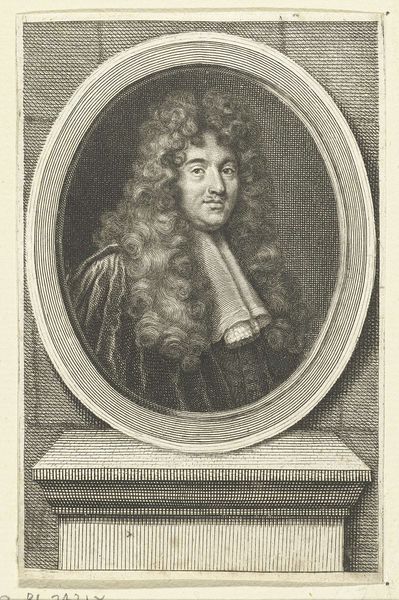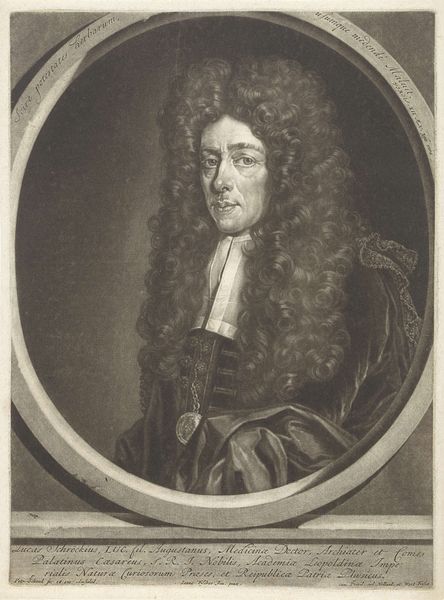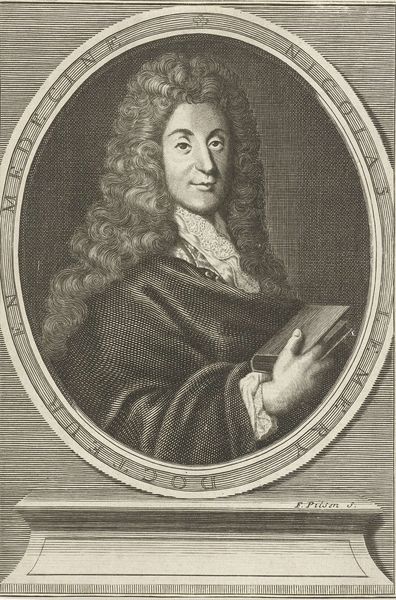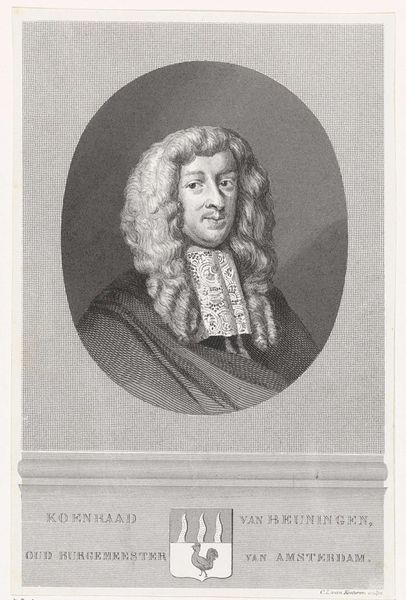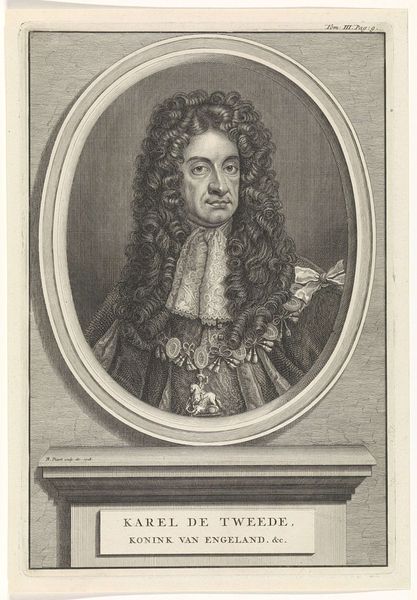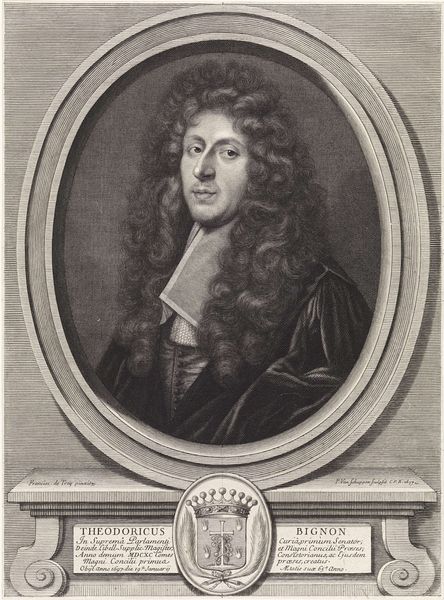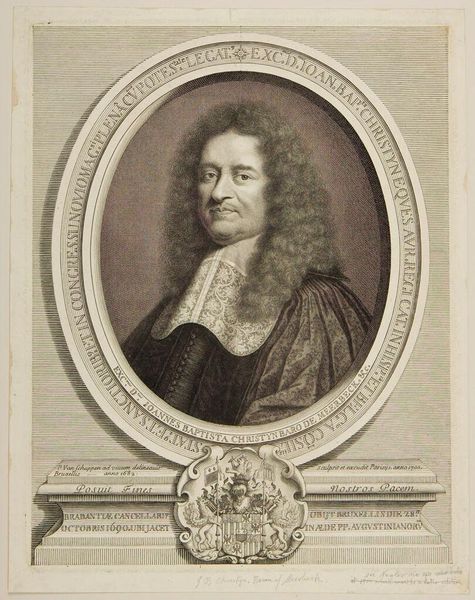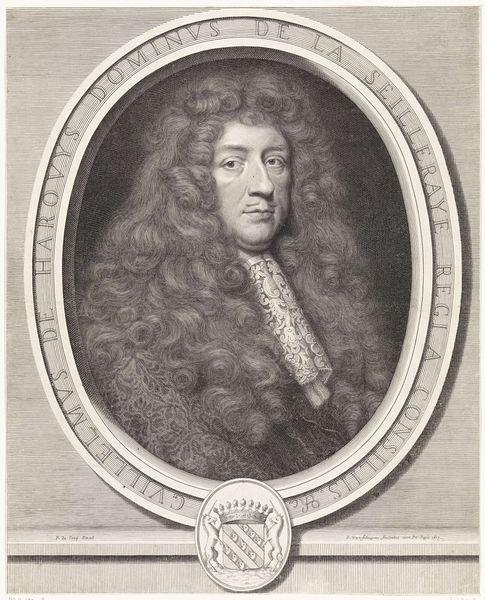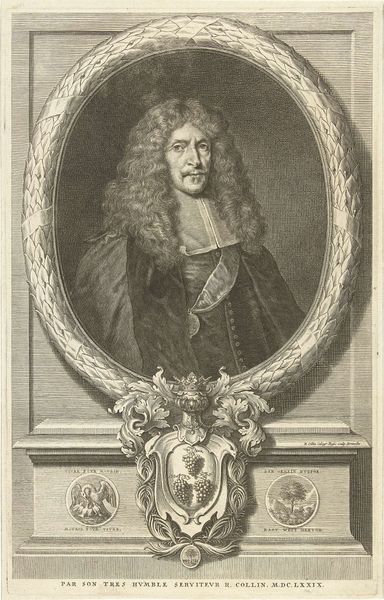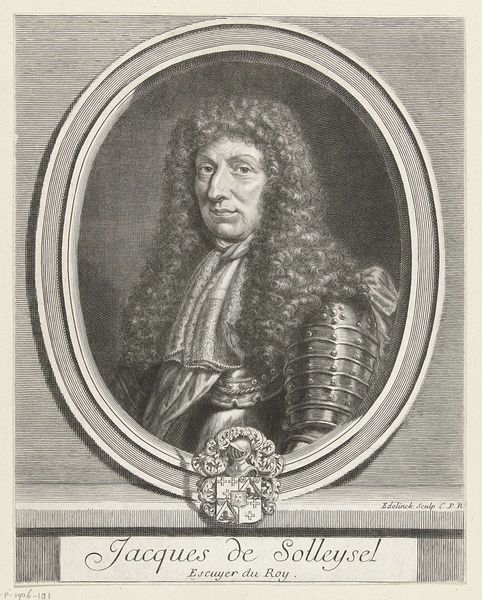
print, engraving
#
baroque
# print
#
old engraving style
#
portrait reference
#
pencil drawing
#
engraving
Dimensions: height 137 mm, width 85 mm
Copyright: Rijks Museum: Open Domain
Curator: Matthijs Pool created this engraving, "Portret van Henri François d'Aguesseau", sometime between 1686 and 1727. It now resides in the Rijksmuseum. Editor: My initial impression is that of careful reserve. The tonal range is narrow, dominated by grey, and the oval frame emphasizes the subject’s stillness. It feels very controlled, contained. Curator: Engravings like this were vital for disseminating images and information in an era before photography. Consider the labor involved in meticulously etching the plate, a skilled craft serving the powerful elite. D'Aguesseau was, after all, a significant figure in French legal history. This wasn't simply art; it was a form of visual propaganda, reinforcing his status and influence. Editor: Certainly, its purpose is to convey authority, and the form achieves that effectively. Look at the textures: the precise hatching that models his voluminous wig and the heavy folds of his robes. There’s a real mastery in rendering those textures purely through line, creating an impressive illusion of depth. The oval framing is also very well-balanced. Curator: The choice of engraving itself carries social meaning. It’s reproducible, shareable among a specific class. The distribution of images like this would shape public perception, contributing to a constructed image of power. Who owned these prints? How were they displayed? These are all important material considerations. Editor: Perhaps, but let's not overlook the artist’s intent within the chosen medium. Pool carefully manipulated light and shadow through the density and direction of his lines to sculpt D'Aguesseau's features and imbue them with a sense of gravity. The composition, limited palette, and the baroque stylistic choices add to the seriousness of the portrait. Curator: And all those choices ultimately served a very real, social purpose. This wasn’t art for art’s sake. This was about constructing and maintaining power through reproducible imagery. The value resides in understanding how such a portrait functioned within its specific historical moment and whom it served. Editor: A moment expertly captured through skillful manipulation of light and line. Thinking about this piece and discussing it, I notice, it really showcases how aesthetic choices intertwine with a desire for power and the establishment of identity.
Comments
No comments
Be the first to comment and join the conversation on the ultimate creative platform.

